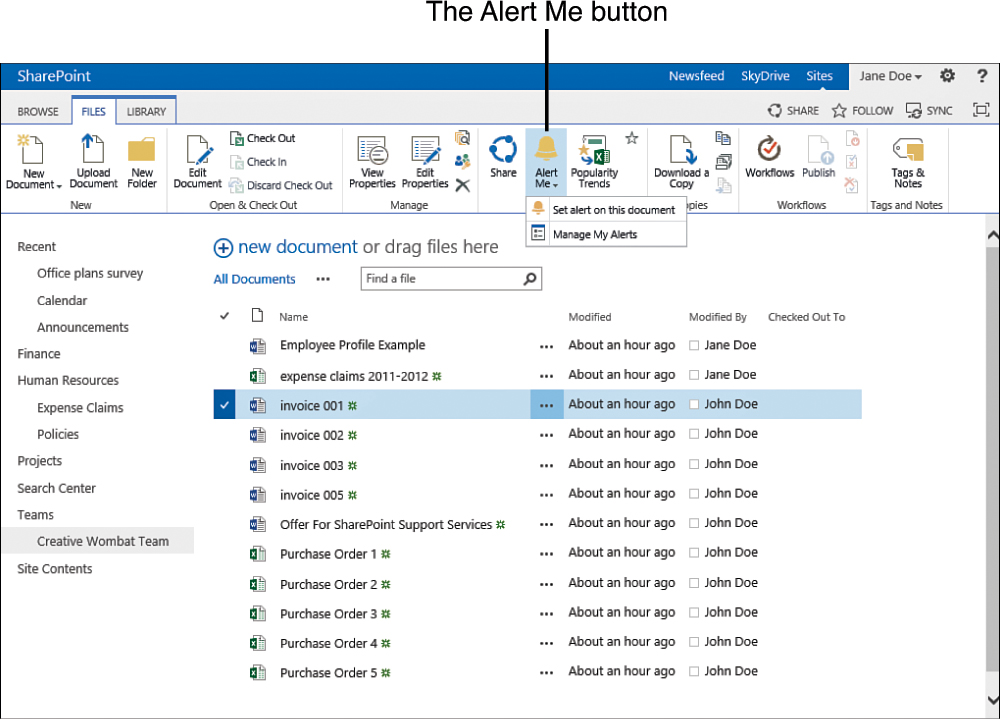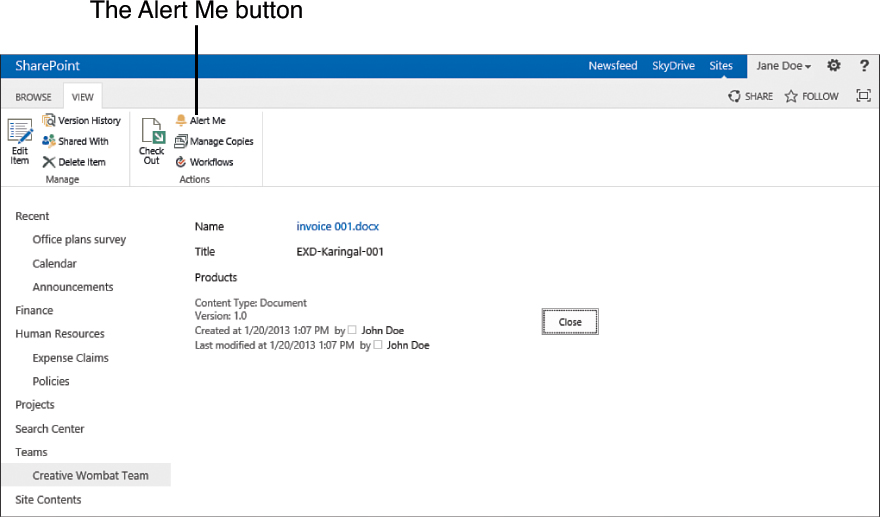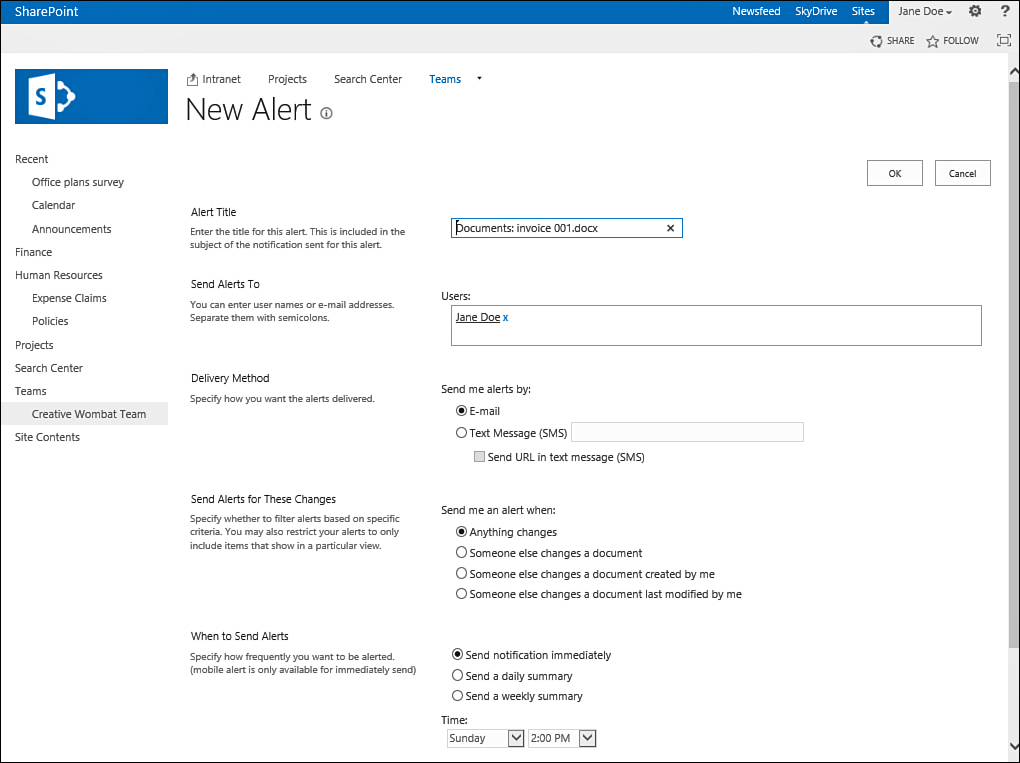Scenario/Problem:
Information in sites changes often. Lists and libraries get updated
with new items or files, and existing items and files get updated or
deleted. Often, you need to know if something important to you is
changed or updated. For example, if a document containing a policy that
heavily impacts your work is updated, you want to know immediately. Or
if a new list item is entered into a contacts list used to track
potential customers, you want to know about it so you can call the
customer.
Solution:
You can set up alerts that notify you when some changes are made in
SharePoint document libraries or lists or on single items. When you
create an alert, you are asking the system to send you an e-mail or
send a text message (SMS) to your mobile phone when a specific change
occurs. The following sections explain how you can create alerts on
different kinds of data and how to manage your alerts.
Note
Alerts by text messages (SMS) to mobile
phones requires special configuration by the administrator, so that
option might not be available to you.
Create an Alert
You can create an alert on a file or a list
item and also on a library or list. The following sections provide the
details of how to perform each task.
Create an Alert on a File or List Item
When you set up an alert on a document or
list item, SharePoint e-mails you when changes are made to that
document or item. To set this type of alert, select the document or
list item and switch to the Files or Items ribbon. On the ribbon, you
click the Alert Me button and select Set Alert on This Document or Set
Alert on This Item (see Figure 1).

FIGURE 1 The Alert Me button in the Files ribbon when a document is selected.
Alternatively, you can open the properties dialog for the list item or file , the Alert Me button is shown in the ribbon (see Figure 2).

FIGURE 2 The Alert Me button in the View ribbon for a file.
When you select this option, the New Alert
dialog appears, and in it you can define what sort of alert you want to
get on the item (see Figure 3).
If your site supports sending text messages, you can select to have the
alert sent using a text message to a phone number in the Delivery
Method section of the dialog.

FIGURE 3 The New Alert dialog for a file, showing options for a new alert.
Under the Send Alert for These Changes
section, you have multiple options to choose from. For example, you can
choose to be notified just when someone else changes the item or
whenever the item is changed (even when you’re the one who changes it).
The other options in this section are not relevant for alerts on
documents and items.
Note
Different list types have different options
in the Send Alert for These Changes section. For example, a calendar
list has an option to get an alert when the time or location for an
event is changed.
In the When to Send Alerts section, you can
define when the e-mail for a change will be sent. If you choose
Immediately, an e-mail is sent to you whenever someone changes the
document—one e-mail per change. Selecting a daily or weekly summary
reduces the number of e-mails you get; you receive only a summary
e-mail of all the changes.
After selecting the options that you want, a
confirmation e-mail is sent to you, to tell you that the alert has been
set up. Receiving this message might take a few minutes.